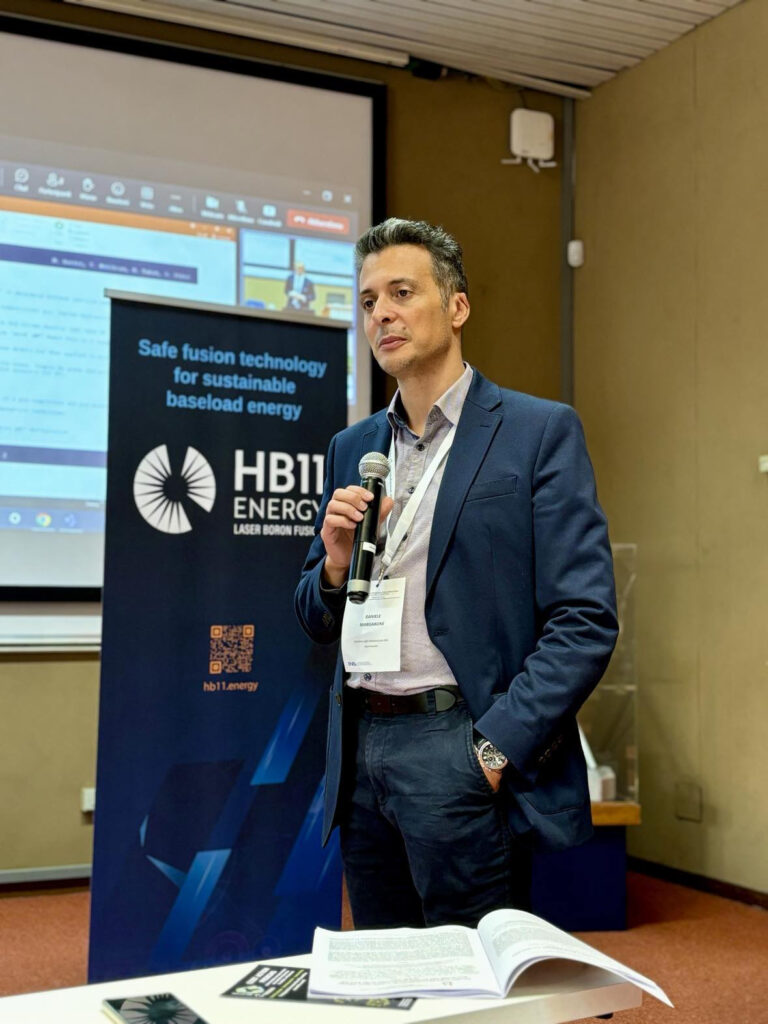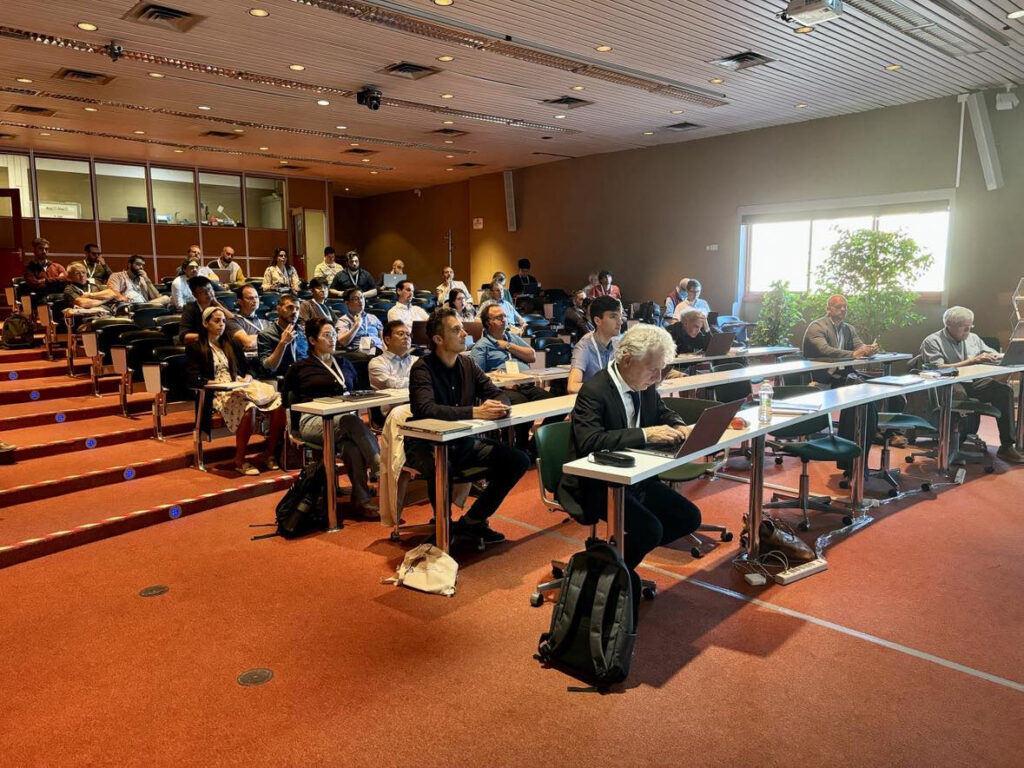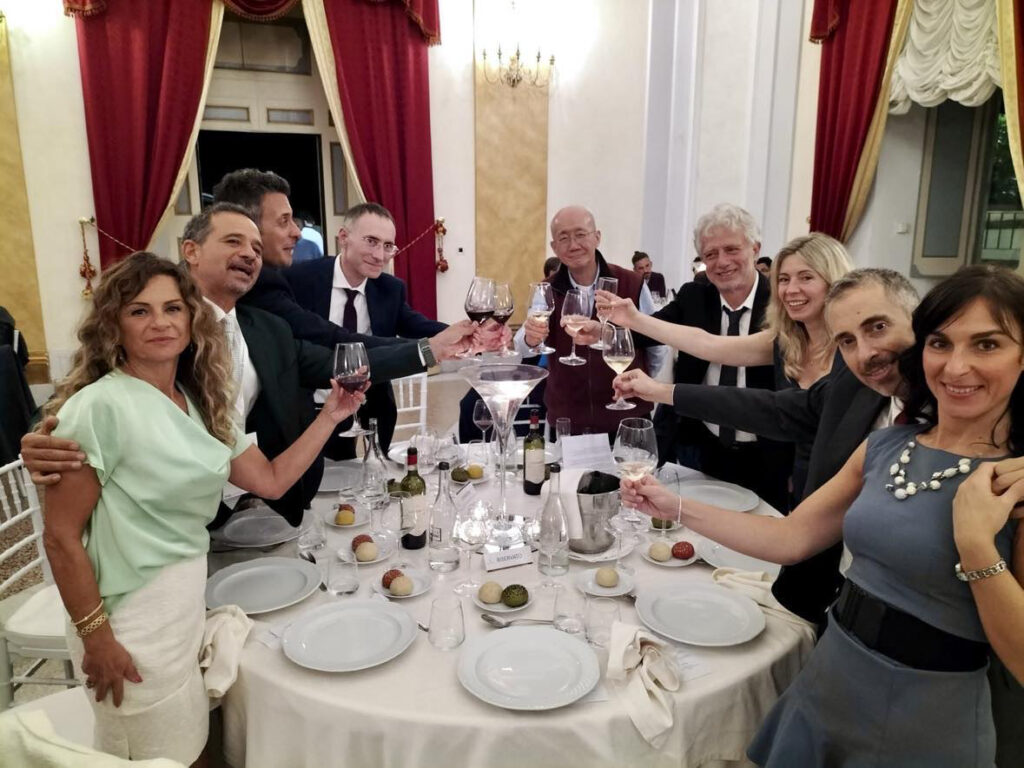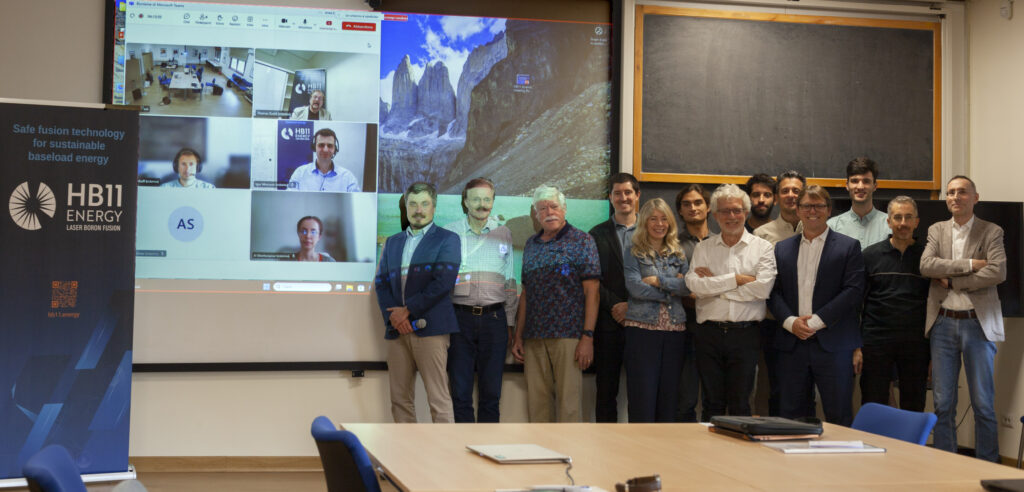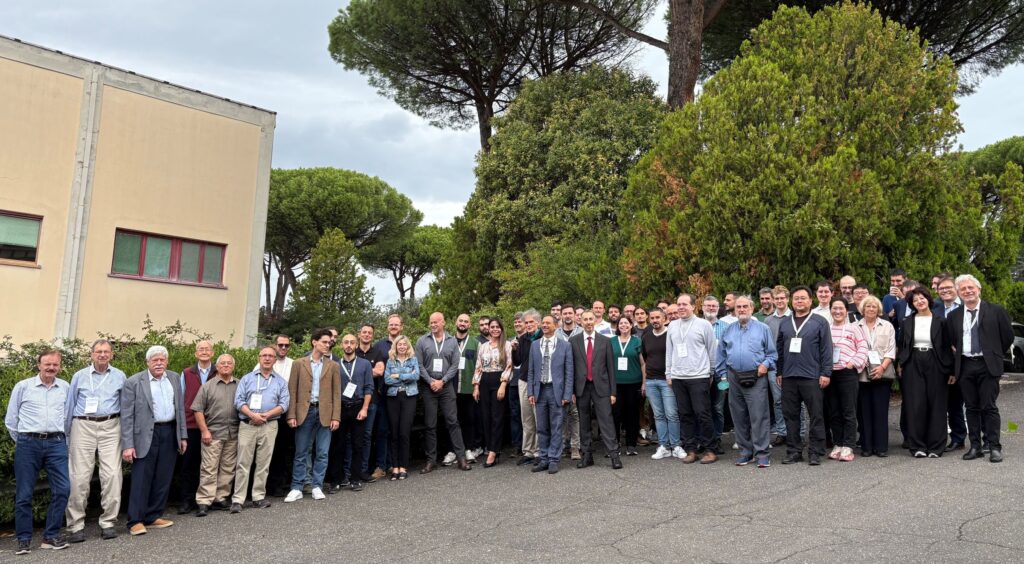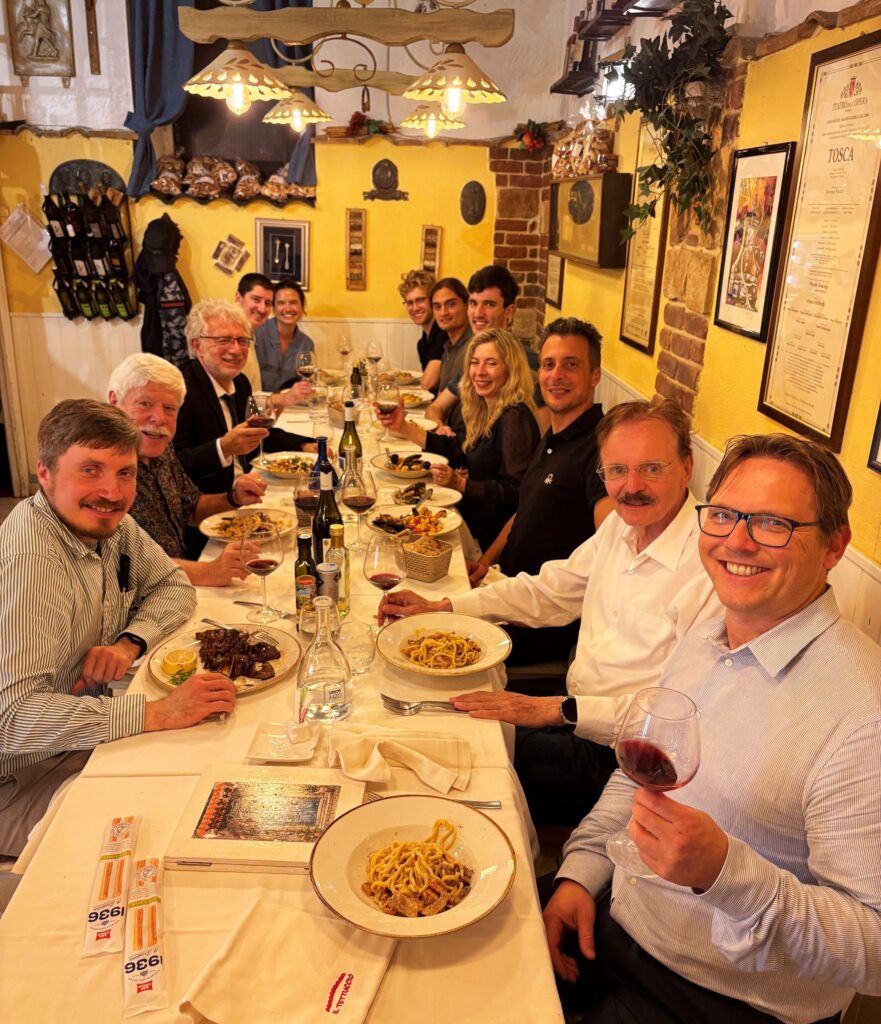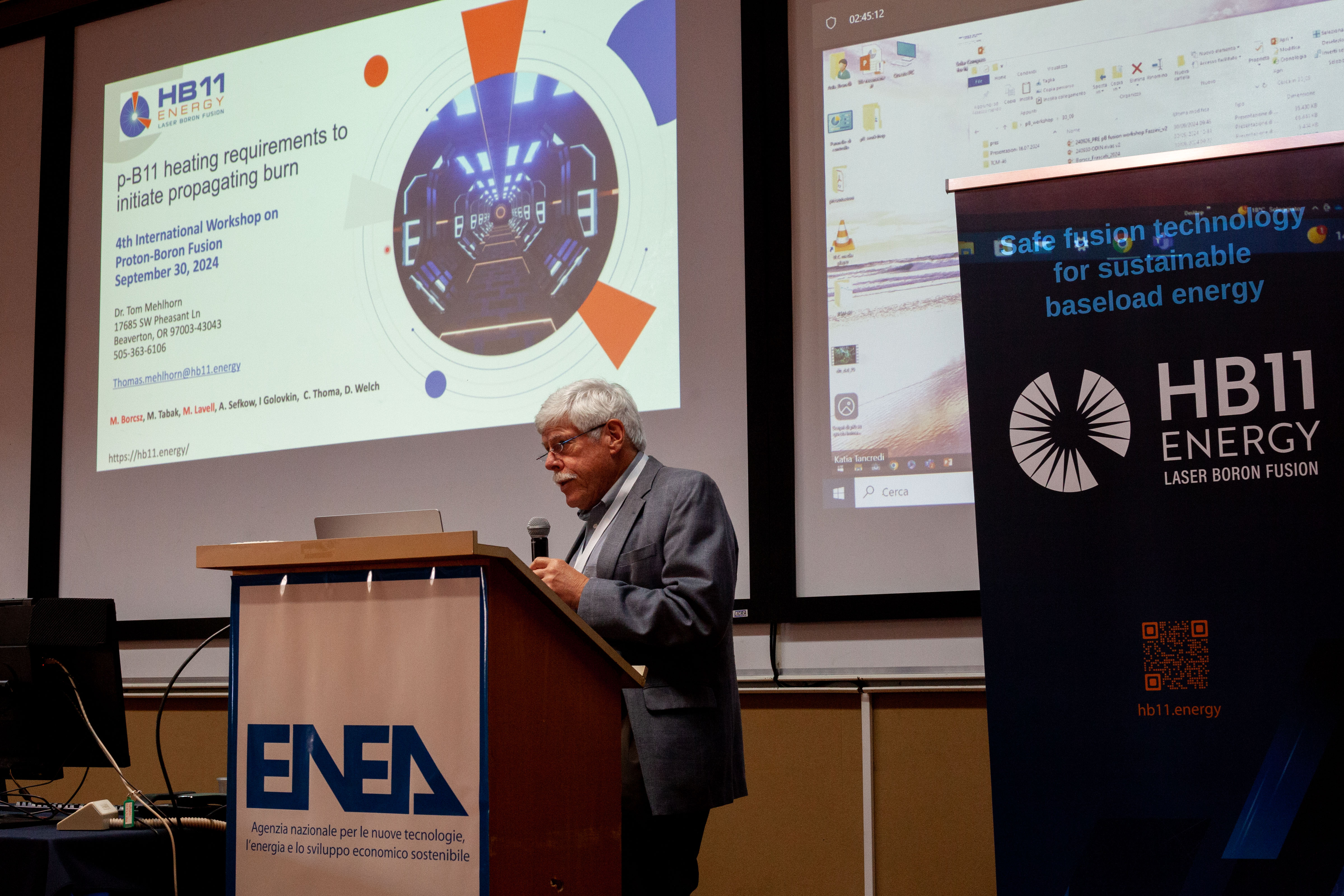HB11 Energy was a sponsor of and major contributor to the 4th International Workshop on Proton-Boron Fusion in Frascati, Italy, 30 September to 3 October. Hosted by ENEA – the Italian National Agency for New Technologies, Energy and Sustainable Economic Development – the Workshop shared information regarding new findings about laser-triggered p-11B fusion reactions, discussed technological challenges and identified potential paths for the funding of Proton-Boron Fusion initiatives.
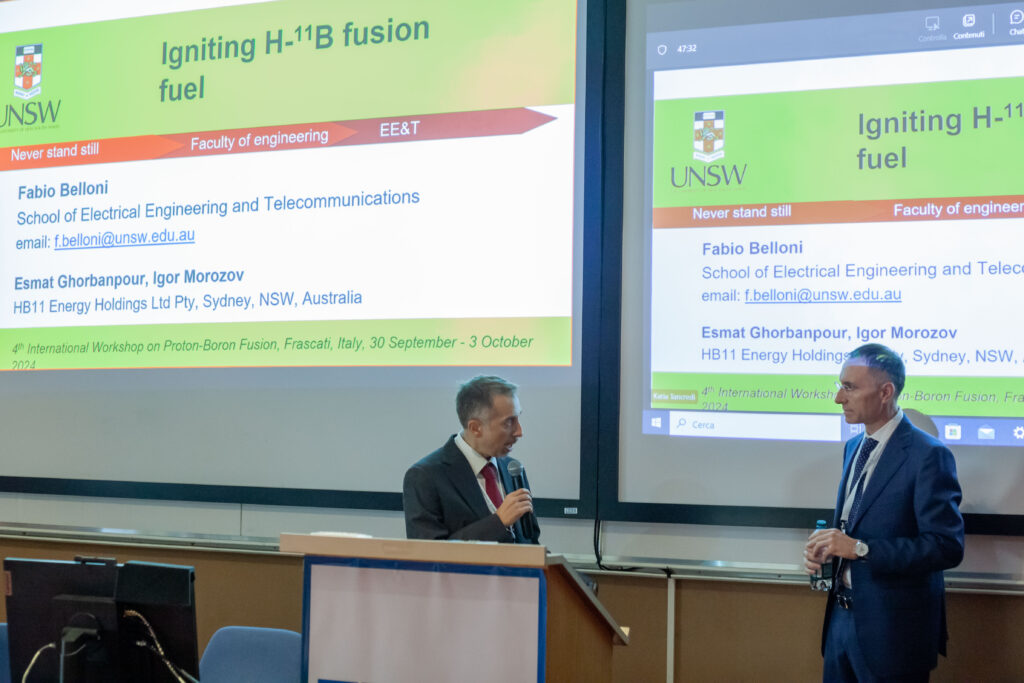
Day 1: “Let’s talk about a Burn” … that’s how Dr. Fabio Belloni introduced his headline presentation at the 4th International Workshop on Proton-Boron Fusion. By definition, the energy created when a fuel is burning must be higher than energy losses. If not, the flame goes out.
H-11B fusion needs very high temperatures, which means a loss of energy in radiation and it becomes more difficult to ignite. In fact, until recently, many thought it was impossible. But discussing a new understanding of ‘burn’, Dr. Belloni spoke of the ability to harness ‘Supra-thermal’ effects to minimise the burn temperature and radiation loss – a critical effect required to reach net-energy-gain.
Our thanks to Dr. Belloni (UNSW) for this important work, carried out with HB11 Energy’s Esmat (Anna) Ghorbanpour and Igor Morozov.
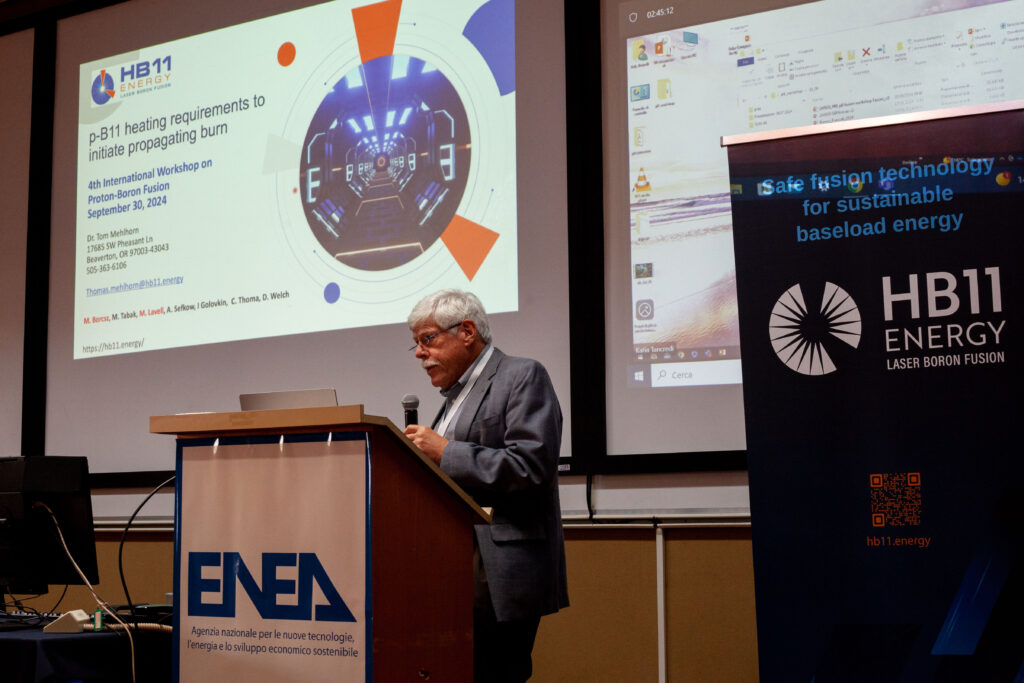
Day 2: How do you engineer a fusion reaction to maximise energy production? HB11 Energy’s simulation work was on show at the 4th International Workshop on Proton-Boron Fusion when our Lead Theoretician, Tom Mehlhorn, gave an overview of three simulation programs HB11 Energy has developed into tools for mapping the burn-space for H-11B fusion.
As a fusion burn is over in a few trillionths of a second, and given the conditions we are producing from high power lasers are like nothing found on Earth, we need computer simulations and supercomputers.
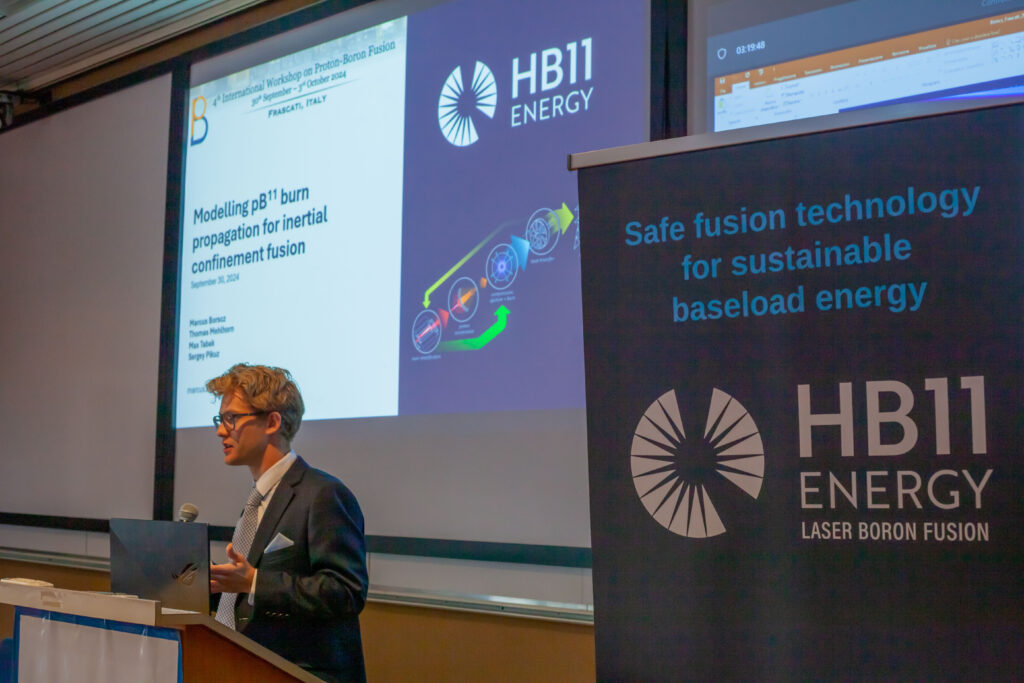
Tom and our undergraduate student, Marcus Borscz, presented a simulation model developed from scratch by Marcus, that’s giving consistent results against codes that have been developed and validated over many years of use in national labs. (A remarkable effort for an undergraduate student! Congratulations Marcus!)
Then Michael Lavelle reported on HB11 Energy’s DoE INFUSE project from the University of Rochester. Michael provided insights as to how we can use radiation from a fusion reaction to pre-heat our fuels. Once again, HB11 Energy is shining bright on the world stage.
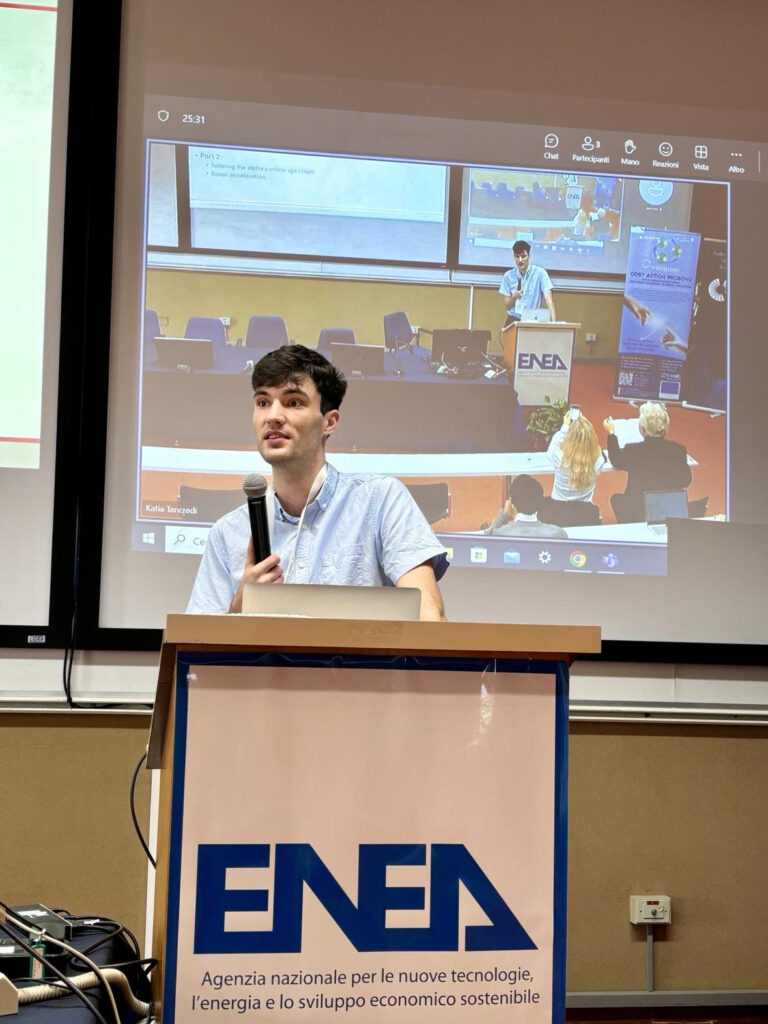
Day 3: Experiment results headlined the third day of the 4th International Workshop on Proton-Boron Fusion in Frascati, Italy. HB11 Energy’s PhD Student from Belfast, Daniel Molloy, reported on results from experiments on the TARANIS laser. As well as demonstrating high hydrogen-boron fusion reaction rates. The results suggested a way to give direction to the alpha particles produced.
We also heard from Kasia Batani on results from the Equation of State experiment. While not demonstrating fusion, these experiments are critical to understanding the properties of fuel under the extreme conditions created by a high power laser pulse ignite fusion – an understanding that is critical to engineering a fusion burn.
HB11 has now performed 12 experiments at international laser facilities, some over many weeks. Our experiments have built the most comprehensive understanding of proton boron fusion and given our team the best insights with regard achieving a ‘supra fusion’ thermal burn to reach net-energy gain and beyond.
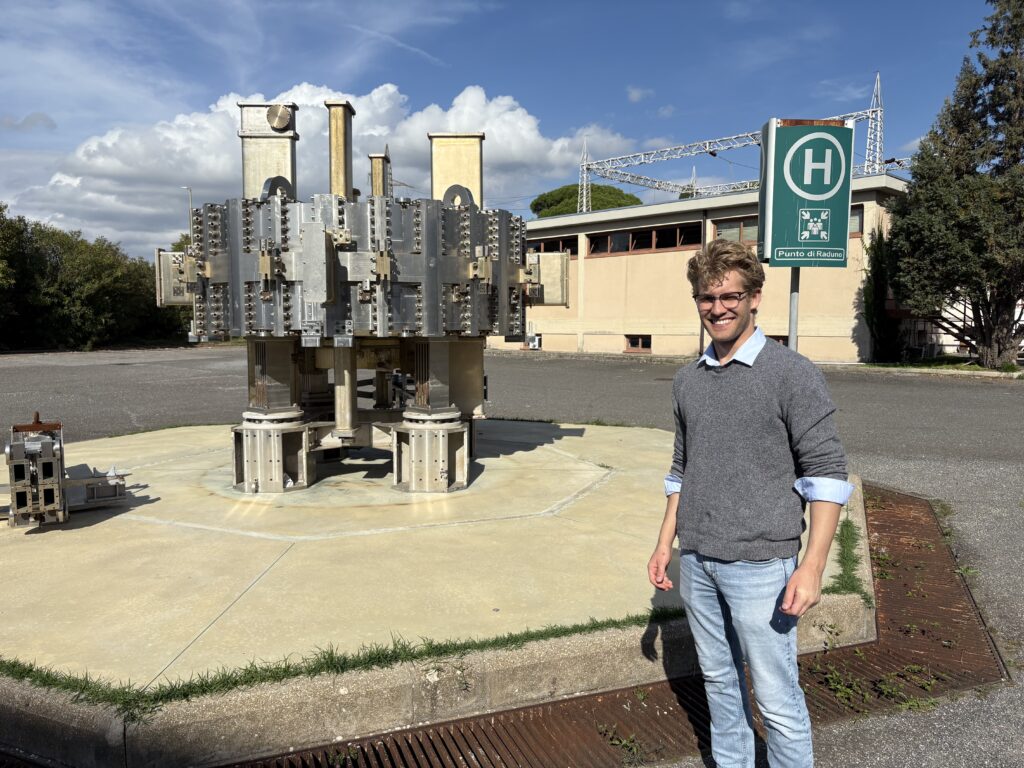
Day 4: Wednesday at this year’s International Workshop on Proton-Boron Fusion included a treat in the afternoon – a tour of the ENEA Frascati Research Centre. ENEA has been a powerhouse of fusion research spanning both magnetic and laser fusion, and boasts some of the world’s first installations of each.
Pictured (with Marcus in the foreground) is the ABC laser facility. And no… that’s not a sculpture in the centre of the roundabout. It’s a tokamak fusion device from the 1970s!
It’s a wrap! HB11 Energy’s contribution to the 4th International Workshop on Proton-Boron Fusion included 7 presentations by members of HB11’s Scientific Advisory Board and collaborators in the field, covering areas of proton-boron fusion including theory and future perspectives of proton-boron fusion, present requirements related to inertial confinement studies, alpha particle production accessed via simulations and CR39 measurements, the determination of the Equation of State of boron compounds.
The Workshop was closed by HB11 Scientific Advisory Board member, Prof. Dieter Hoffman. Prof. Hoffman spoke about “The Quest of Proton Boron Fusion and Related Topics”.

